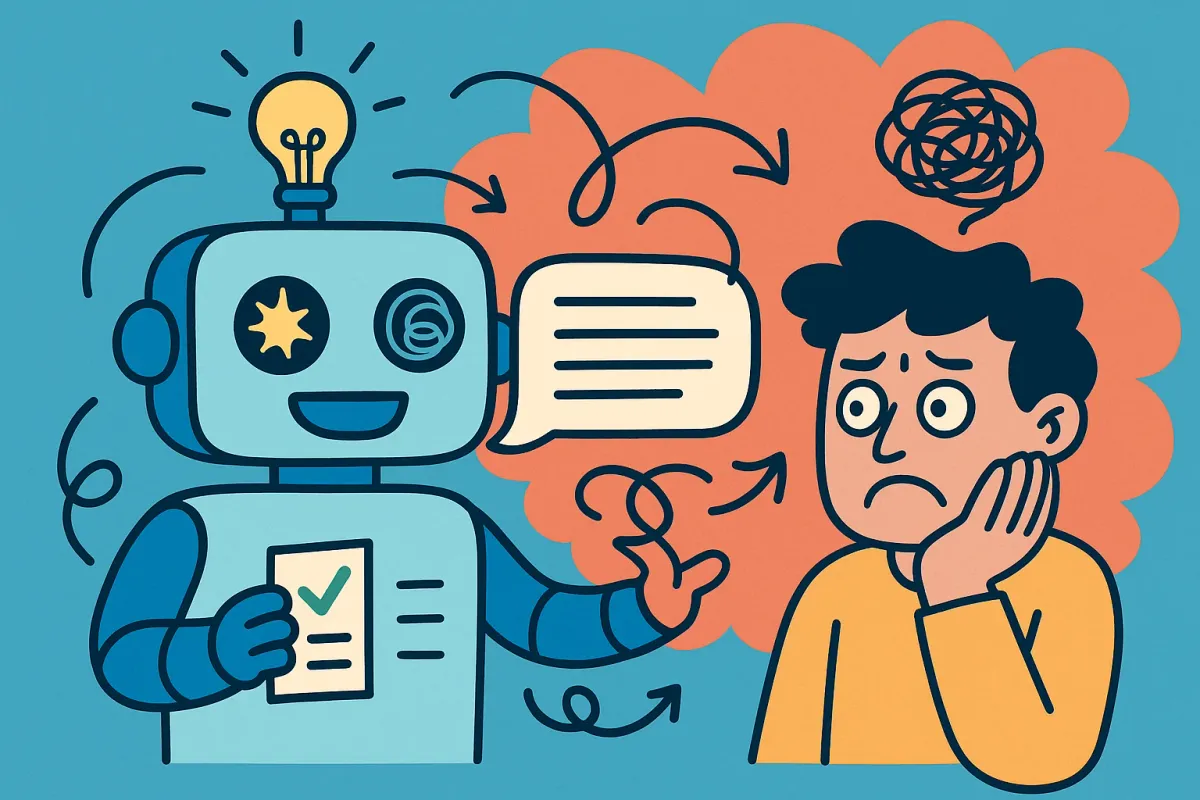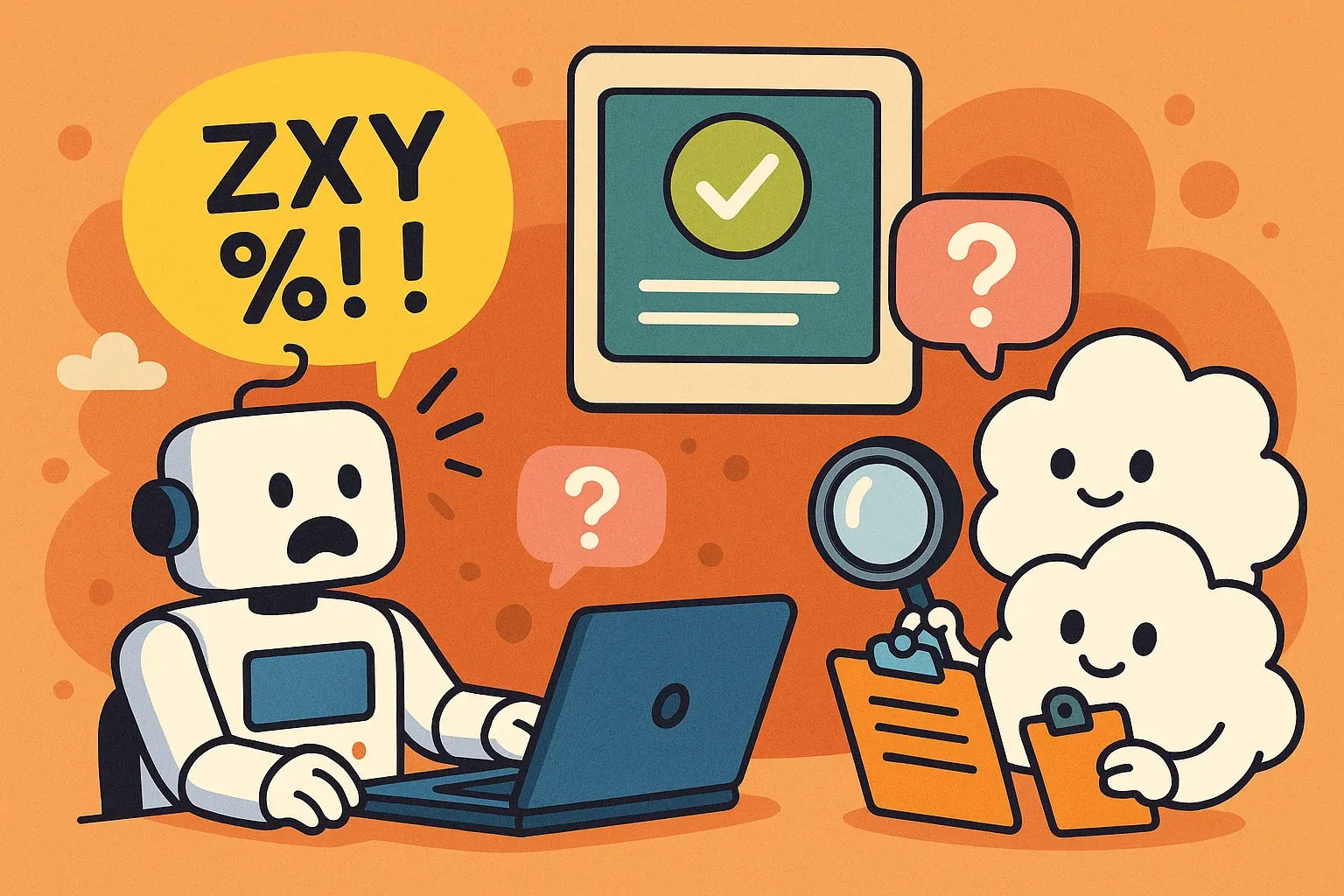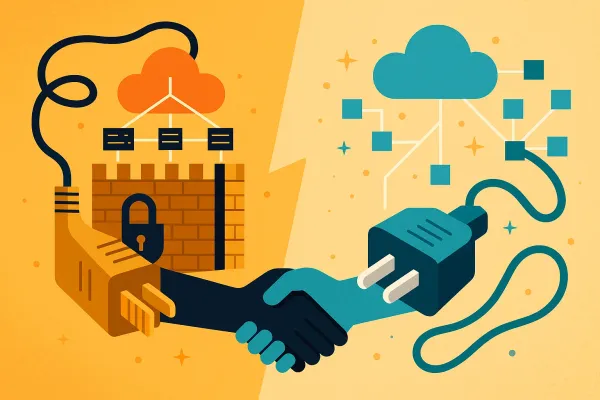A Software Engineer's Guide to LLM Observability and Evaluation
LLM observability is key for reliable AI apps. Traditional monitoring misses semantic errors. This guide covers four essentials: tracing, evaluation, prompt management, and analytics to build robust generative AI solutions.

If you’re building with Large Language Models, you’ve felt it. That strange mix of magic and dread. The magic comes when your application generates a perfectly nuanced, creative, and helpful response. The dread creeps in when, for no apparent reason, it starts spouting nonsense, getting stuck in loops, or confidently hallucinating incorrect facts.
Welcome to the new frontier of software development, where the biggest bugs aren't syntax errors, but semantic failures. Your application can be functionally "up"—returning a 200 OK with low latency—while being completely, semantically "down." This is the core challenge that has rendered traditional Application Performance Monitoring (APM) tools insufficient for the generative AI era. We need a new discipline, a new set of tools, and a new way of thinking: LLM Observability.
This guide is for you, the engineer in the trenches. We'll dissect the essential pillars of LLM observability, take a deep dive into the powerful but perilous world of using LLMs to evaluate other LLMs, and navigate the burgeoning open-source toolkit that can help you ship robust, reliable AI applications.
The Four Pillars: A New Foundation for Monitoring
Traditional APM tracks metrics like CPU usage and database query times. While still relevant, these metrics miss the point with LLM apps. A failure could be a bad prompt, a faulty tool execution, an irrelevant document pulled from a vector database, or the model's own opaque reasoning. To debug this, we need a framework built on four pillars.
- Tracing & Spans: This is your foundation. Tracing captures the entire, end-to-end execution flow of your application as a series of nested "spans." A single trace might show a user query, the subsequent call to a vector DB, the construction of the final prompt, the LLM API call, and any tools the LLM uses. This hierarchical view is the only way to untangle the spaghetti of a complex agentic workflow and find the root cause of a failure.
- Evaluation: This is where things get tricky. How do you measure "good"? Since deterministic checks are often impossible, evaluation relies on a mix of methods: programmatic checks, collecting human feedback (the classic thumbs up/down), and the increasingly popular "LLM-as-a-Judge" paradigm, where one powerful LLM assesses the output of another.
- Prompt Engineering & Management: In LLM applications, the prompt is the code. This pillar covers the tools you need to treat it as such. This means interactive "playgrounds" for rapid iteration, version control to track changes and prevent regressions, and A/B testing to find the most effective prompt templates.
- Monitoring & Analytics: This is where everything comes together. Dashboards provide real-time and historical views of key performance indicators (KPIs) derived from the other pillars. This includes operational metrics like cost (token usage) and latency, but more importantly, it tracks the quality scores from your evaluations, allowing you to spot performance dips and analyze usage patterns over time.
Deep Dive: The Promise and Peril of "LLM-as-a-Judge"
The "LLM-as-a-Judge" paradigm has emerged as a cornerstone of modern evaluation. It’s the practice of using a powerful LLM (like GPT-4) to score the quality of outputs from your application's LLM. This offers a scalable alternative to slow and expensive manual human evaluation. Traditional text metrics like BLEU or ROUGE, which just measure word overlap, are useless for judging the semantic quality of generated text. An LLM judge, on the other hand, can assess nuanced qualities like factual accuracy, helpfulness, and tone.
However, an LLM judge is not a magic bullet. It’s a complex system with its own set of biases and failure modes. To use it effectively, you need to be aware of the pitfalls.
Common Biases of LLM Judges
Research and practical experience have uncovered several systematic biases that can skew results:
- Position Bias: In pairwise comparisons (choosing between response A and B), models often show a preference for the response presented first.
- Verbosity Bias: Judges tend to favor longer, more detailed answers, even if a more concise response is more accurate.
- Self-Enhancement Bias: A model may be biased towards outputs generated by itself or models from the same family (e.g., GPT-4 judging GPT-3.5).
- Limited Fine-Grained Scoring: LLMs are more reliable at high-level decisions (e.g., a 1-5 scale) than at finely-grained scores (e.g., 1-100), where judgments can become more arbitrary.
Taming the Judge: Advanced Prompting Techniques
The good news is that you can mitigate these biases with careful prompt engineering. Simply asking "Is this good?" won't cut it.
- Use Detailed Rubrics: Be explicit. Don't just ask for a "helpfulness" score from 1-5. Define precisely what a "5" looks like ("Completely answers the user's question with accurate, actionable information") versus a "3" ("Partially answers the question but is missing key details").
- Force a Chain-of-Thought: This is a game-changer. Instruct the judge model to first articulate its reasoning step-by-step before giving a final score. Forcing it to "show its work" dramatically improves the consistency and accuracy of the final judgment.
- Provide Few-Shot Examples: Include a few examples of inputs, outputs, and their correct, pre-judged scores directly in the prompt. This helps calibrate the judge and leads to more consistent results.
The key takeaway is this: an LLM judge is a powerful tool, but it's one you must build and validate with the same rigor you apply to your main application. The universally recommended best practice is to start with a "human-in-the-loop" process. Have human experts manually label a small, diverse dataset to create a ground truth. Use this dataset to test, calibrate, and validate your LLM judge's performance before you let it run automatically at scale.
Navigating the Open-Source Landscape in 2025
The market has exploded with tools to tackle these challenges. A powerful trend is emerging: the convergence around OpenTelemetry (OTel). OTel is a vendor-neutral, open-source standard for telemetry data (traces, metrics, logs). By adopting OTel, you avoid vendor lock-in and ensure your instrumentation is a portable, future-proof asset. A tool’s relationship with OTel is a key indicator of its strategic foresight.
Here’s how the leading tools stack up for engineers:
| Tool | Core Focus | OTel Support | Evaluation Depth | License |
|---|---|---|---|---|
| Langfuse | All-in-one LLM platform | OTel SDK (Q2) | Built-in + LLM-Judge | MIT |
| Traceloop OpenLLMetry | OTel-first tracing | Native | Basic checks | Apache-2.0 |
| Helicone | Proxy + analytics + eval | Emits to OTel | Integrates RAGAS | Apache-2.0 |
| Arize Phoenix | Notebook-first tracing | OTel ingest | RAG & toxicity evals | Apache-2.0 |
| Comet Opik | Eval + optimization | OTel roadmap | PyTest unit tests | Apache-2.0 |
| DeepEval | “PyTest for LLMs” eval | Consumes OTel | 14+ SOTA metrics | Apache-2.0 |
| RAGAS | RAG-specific eval | Integrates w/ tracers | Context precision/recall | Apache-2.0 |
| MLflow | Model tracking & registry | Integrates via plugins | Flexible (custom metrics/logs) | Apache-2.0 |
The All-in-One Platforms
These tools aim to be the central hub for your entire LLM development lifecycle.
- Langfuse: Often considered one of the most mature and feature-rich platforms, Langfuse provides robust tracing (with excellent agent graph visualizations), a highly flexible evaluation framework, and sophisticated prompt management. It's MIT-licensed and can be self-hosted, making it a favorite for teams that want full control.
- Arize Phoenix: Backed by the established AI observability company Arize AI, Phoenix is built from the ground up on OpenTelemetry. It’s known for a polished, notebook-first user experience that appeals to data scientists and for its seamless (though commercial) upgrade path to the full Arize enterprise platform.
- Comet Opik: From the MLOps stalwart Comet, Opik’s killer feature is its deep integration with the existing Comet platform. This makes it a compelling choice for the thousands of teams already using Comet for traditional ML experiment tracking.
LLM Gateways and Proxies
- Helicone: An open-source observability platform that operates as a lightweight proxy. With a one-line code change, you can route all your LLM traffic through Helicone to get immediate logging, cost tracking, and analytics.It offers powerful features like caching to reduce latency and costs, custom rate limiting to prevent abuse, and integrations with evaluation frameworks like RAGAS.Its new AI Gateway, built in Rust, provides a unified, high-performance interface for over 100 models, simplifying multi-provider setups and adding intelligent routing and failover capabilities.
The Specialists
While platforms consolidate, best-of-breed specialized tools continue to thrive by offering depth that all-in-one solutions struggle to match.
- OpenLLMetry: This isn't a platform, but a universal instrumentation layer. It’s a lightweight set of extensions for OpenTelemetry with an exhaustive list of integrations. Its goal is to enrich standard OTel traces with LLM context and forward them to any OTel-compatible backend, whether it's Datadog, Splunk, or Langfuse.

- DeepEval: This framework has branded itself as "Pytest for LLMs." It focuses on integrating rigorous, automated evaluation into your CI/CD pipeline. Its strength is a library of over 14 research-backed metrics for everything from RAG faithfulness to hallucination and toxicity detection.
- MLflow: A long-standing and trusted MLOps platform from the Linux Foundation, MLflow has recently added powerful, OTel-native tracing and evaluation capabilities. Its advantage is providing a single, unified framework for managing both your traditional ML models and your new generative AI applications.
- RAGAS: A hyper-specialized framework dedicated exclusively to evaluating Retrieval-Augmented Generation (RAG) pipelines.While other platforms offer general evaluation, RAGAS provides a suite of metrics tailored for this specific architecture, such as Faithfulness (is the answer grounded in the retrieved context?), Contextual Precision (is the retrieved context relevant?), and Answer Relevancy.For any team building a serious RAG application, RAGAS has become an essential tool for diagnosing issues and optimizing the complex interplay between retrieval and generation.
Making the Right Choice for Your Team
The best stack depends on your team's needs.
- For Large Enterprises: Prioritize standards, security, and control. A powerful strategy is to use a universal instrumentation layer like OpenLLMetry to capture data and feed it into a robust, self-hosted platform like Langfuse. Augment this with a specialized framework like DeepEval for automated quality gates in your CI/CD pipeline.
- For Agile Startups: Speed and low overhead are key. The generous free tiers of managed cloud platforms like Langfuse Cloud or Comet Opik provide the fastest path to productivity without infrastructure headaches.
- For Teams Already in an MLOps Ecosystem: Leverage what you know. If your team is built on Comet or MLflow, adopting their respective LLM tools (Opik and MLflow Tracing) is the lowest-friction path.
The world of generative AI development is moving at a breakneck pace. The challenges are new, but the engineering principles of rigor, testing, and observability remain the same. By embracing a structured approach to monitoring and evaluation, you can move beyond the dread of unpredictable behavior and focus on building the magic.
The Bottom Line
The open-source LLM observability ecosystem is maturing at breakneck speed. Whether you’re building agentic workflows, optimizing prompts, or running LLMs in production, the right stack will save you from debugging nightmares and vendor lock-in. The future is standards-driven, modular, and—if you choose wisely—remarkably interoperable.
If you haven’t already, now is the time to instrument your LLM apps with OTel, invest in robust evaluation, and join the communities shaping the next generation of AI engineering.
Further Reading
To dive deeper into the topics we've covered, here are five high-quality resources that offer foundational knowledge, practical guidance, and a look into the future of LLM development:
- Judging LLM-as-a-Judge with MT-Bench and Chatbot Arena: This is the foundational academic paper that introduced and validated the "LLM-as-a-Judge" concept. It's a must-read to understand the original research, the identified biases (positional, verbosity), and the data that proves strong LLMs can match human evaluation preferences with over 80% agreement.
- A Practical Guide for Evaluating LLMs and LLM-Reliant Systems: Moving from theory to practice, this paper provides a structured, actionable framework for designing and implementing robust evaluation suites. It's an excellent resource for engineers looking to build a comprehensive testing strategy that goes beyond basic metrics.
- LLMs-as-Judges: A Comprehensive Survey on LLM-based Evaluation Methods: For a bird's-eye view of the entire landscape, this survey paper is invaluable. It systematically covers the why, how, and where of using LLM judges, analyzes their limitations, and discusses future research directions.
- LLMOps in Production: 287 More Case Studies of What Actually Works: This blog post offers a dose of reality, analyzing what's truly working in production as of mid-2025. It cuts through the hype to discuss the rise of narrow agents, the critical role of evaluation infrastructure, and the increasing complexity of RAG systems.
- Semantic conventions for generative AI systems: As emphasized in this post, OpenTelemetry is the emerging standard. This official documentation is the ground truth for any engineer implementing observability. It details the specific attributes for tracing LLM requests, token counts, model parameters, and more, ensuring your instrumentation is standardized and interoperable.




